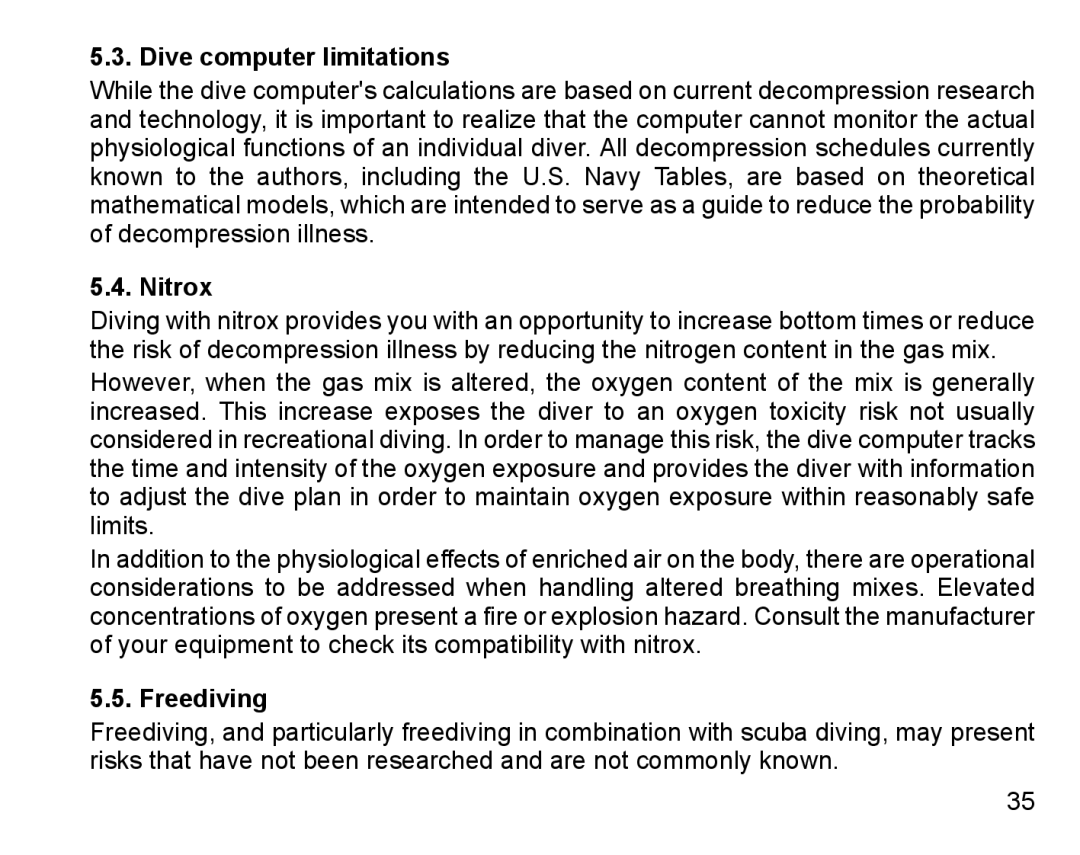5.3. Dive computer limitations
While the dive computer's calculations are based on current decompression research and technology, it is important to realize that the computer cannot monitor the actual physiological functions of an individual diver. All decompression schedules currently known to the authors, including the U.S. Navy Tables, are based on theoretical mathematical models, which are intended to serve as a guide to reduce the probability of decompression illness.
5.4. Nitrox
Diving with nitrox provides you with an opportunity to increase bottom times or reduce the risk of decompression illness by reducing the nitrogen content in the gas mix. However, when the gas mix is altered, the oxygen content of the mix is generally increased. This increase exposes the diver to an oxygen toxicity risk not usually considered in recreational diving. In order to manage this risk, the dive computer tracks the time and intensity of the oxygen exposure and provides the diver with information to adjust the dive plan in order to maintain oxygen exposure within reasonably safe limits.
In addition to the physiological effects of enriched air on the body, there are operational considerations to be addressed when handling altered breathing mixes. Elevated concentrations of oxygen present a fire or explosion hazard. Consult the manufacturer of your equipment to check its compatibility with nitrox.
5.5. Freediving
Freediving, and particularly freediving in combination with scuba diving, may present risks that have not been researched and are not commonly known.
35
